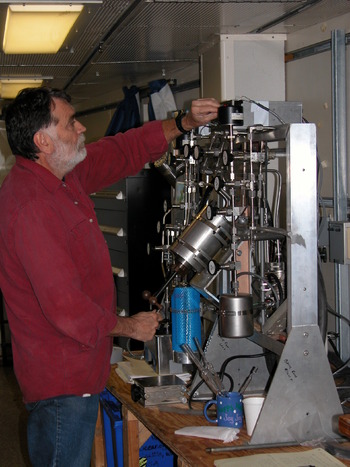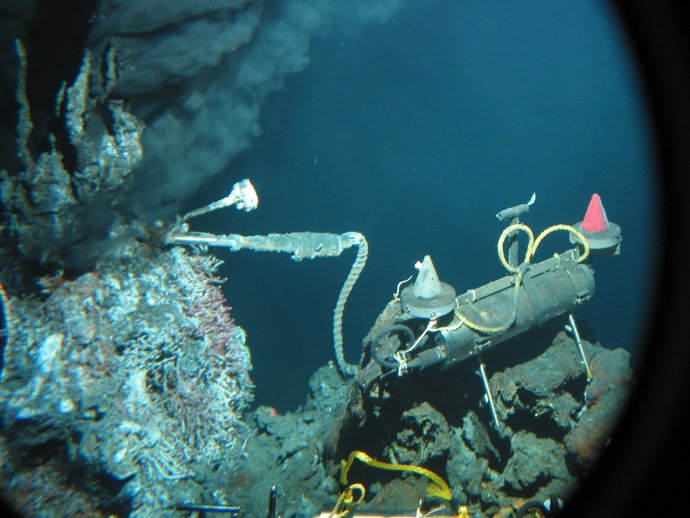Work began in January 2012 on the design and build of the Ocean Observatories Initiative's Regional Scale Nodes' first Core Non-Commercial instrument: a temperature-resistivity probe that will collect data from fluids emerging from seafloor hotsprings in the caldera at Axial Seamount, located at a water depth of ~1500 m (4921 ft). Measuring the temperature and chemistry of hydrothermal vent fluids is a core requirement of the OOI RSN.
There will eventually be several OOI RSN Core Non-Commercial instruments, which are not available as off-the shelf products, but rather must be specially designed to operate for long periods within the deep-sea environment of extreme pressures and temperatures. For example, the temperature-resistivity probe must be capable of making direct measurements of fluids that can reach temperatures of >350°C (662°F). The probe also measures resistivity, as a proxy for chloride concentrations. Boiling is a common process beneath the seafloor at Axial and within fluids issuing directly from the vent orifices. Chloride measurements, therefore, are important to understand phase-separation processes, with implications for understanding metal deposition, gas generation, and microbial ecosystem development.
The team designing and building the probe is led by Dr. Marvin Lilley, a Professor of Oceanography in the University of Washington's School of Oceanography. Lilley has decades of experience studying the chemistry and microbiology of hydrothermal systems and developing instruments to better characterize such systems. Lilley has also been involved in the discovery of numerous vent fields within the world's oceans.
Lilley’s team developed similar probes in the late 1990s. With funding that included approximately $800,000 from the W.M. Keck Foundation proto-NEPTUNE program at the University of Washington, the probes have been deployed on an annual basis within vent environments since 2000. These probes were left on the seafloor for only a few months at a time prior to the development of underwater cabled observatories. Now Lilley and his team are deploying the probes on cabled systems within active vent systems on the Juan de Fuca Ridge, systems that will operate around the clock for 25 years.




